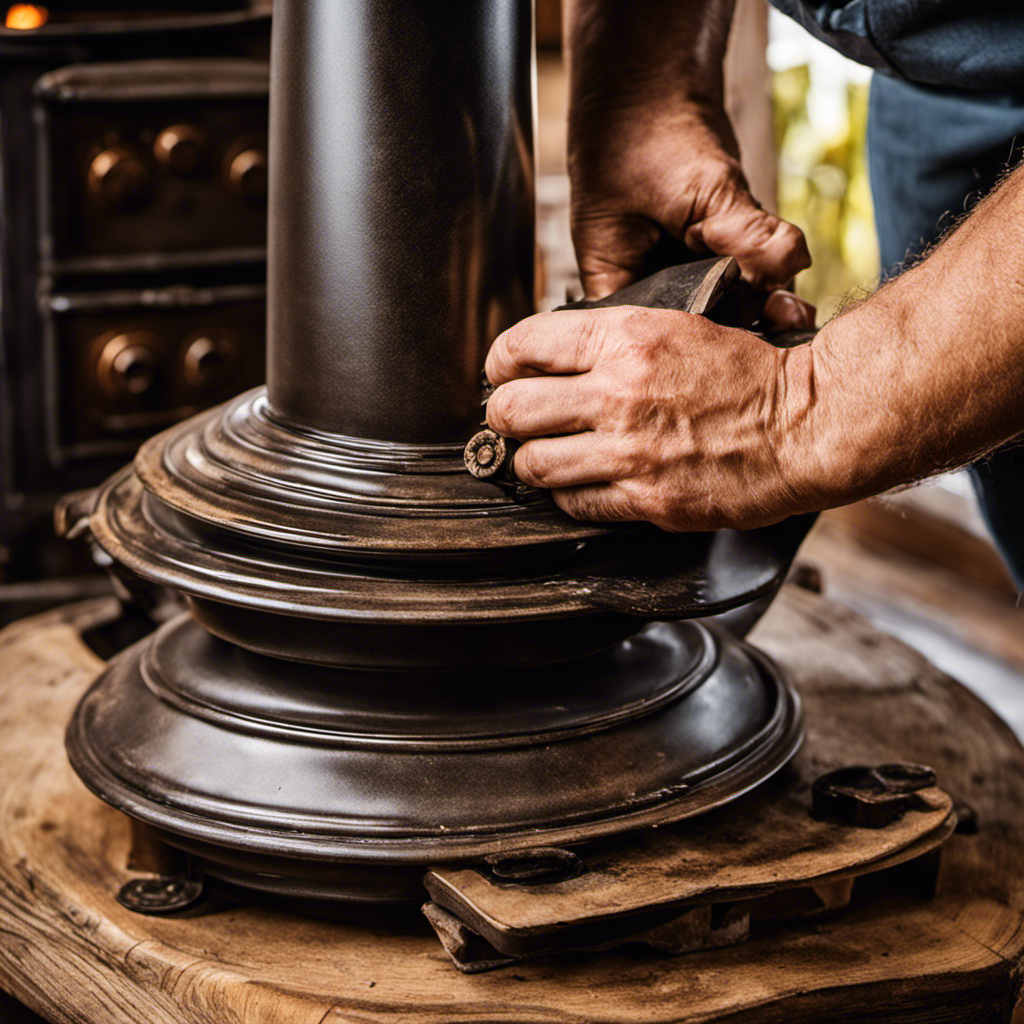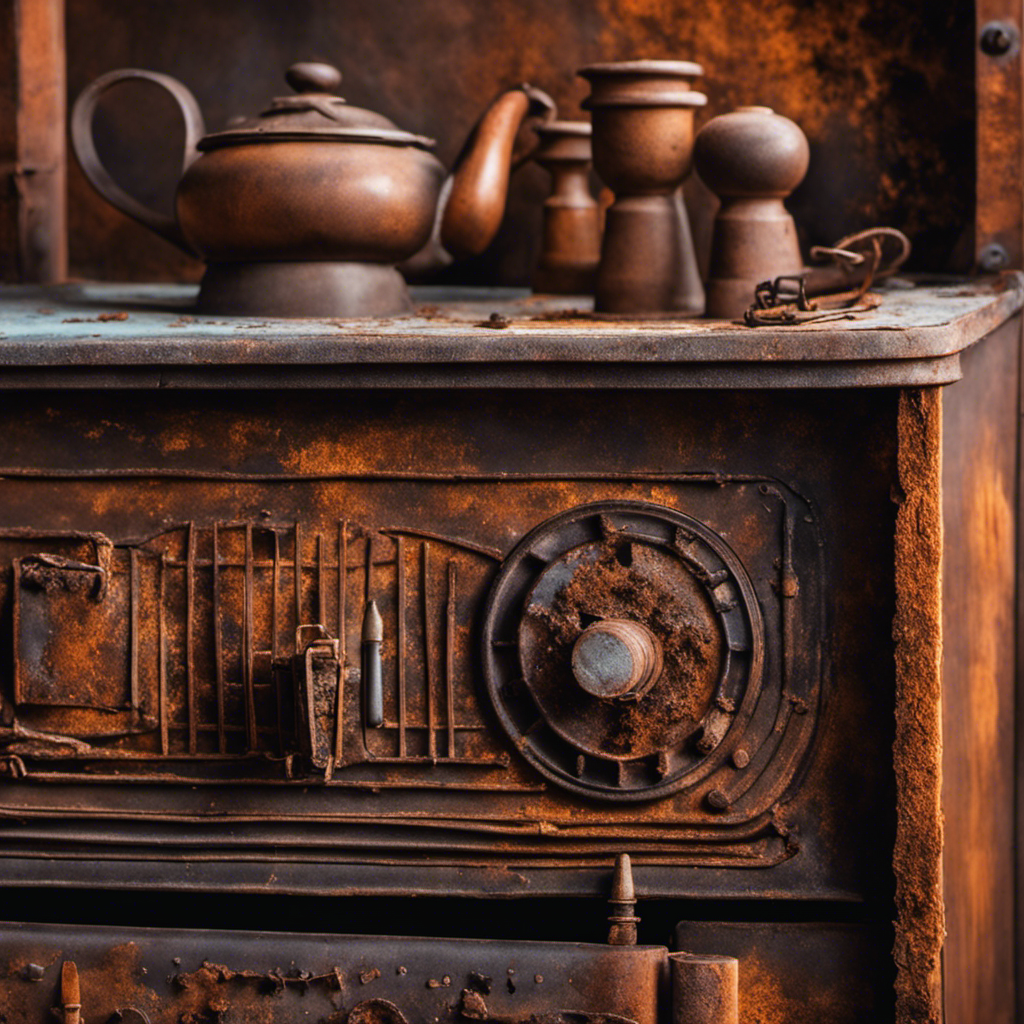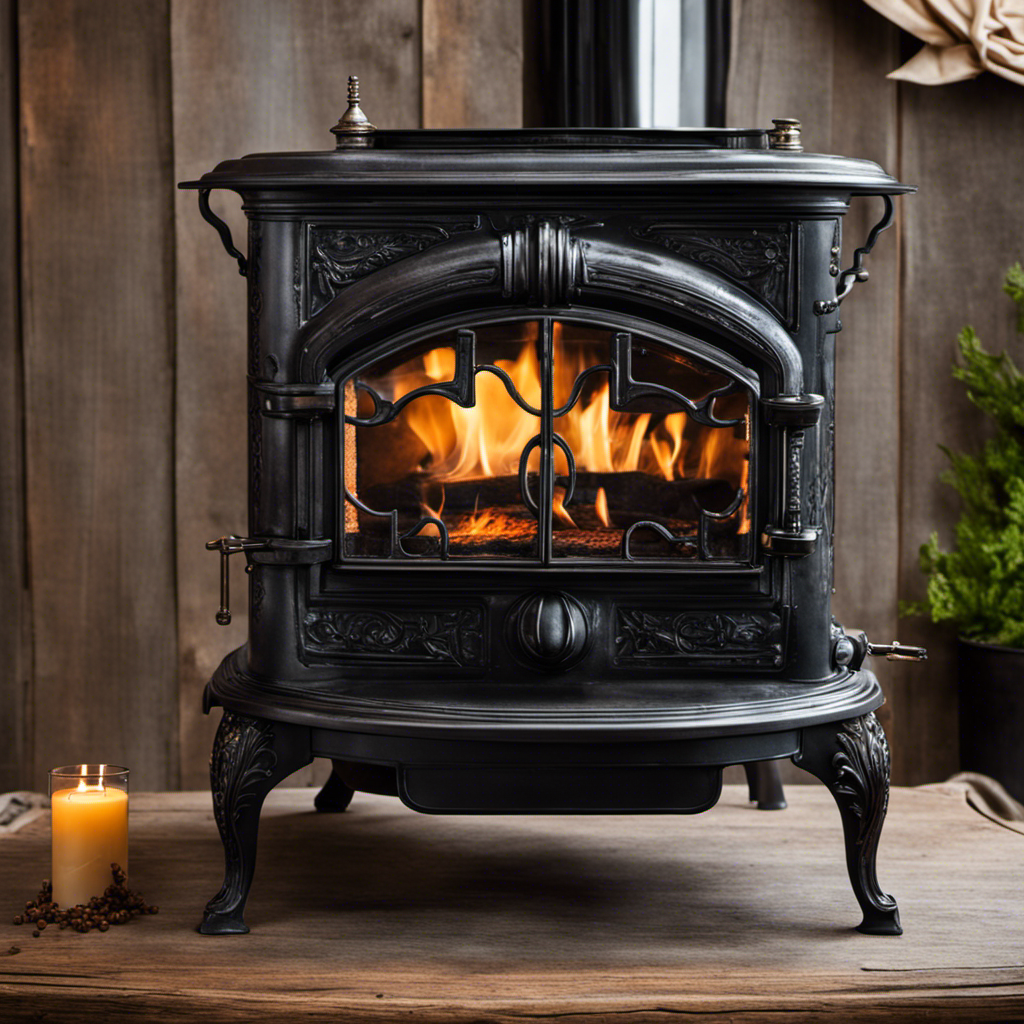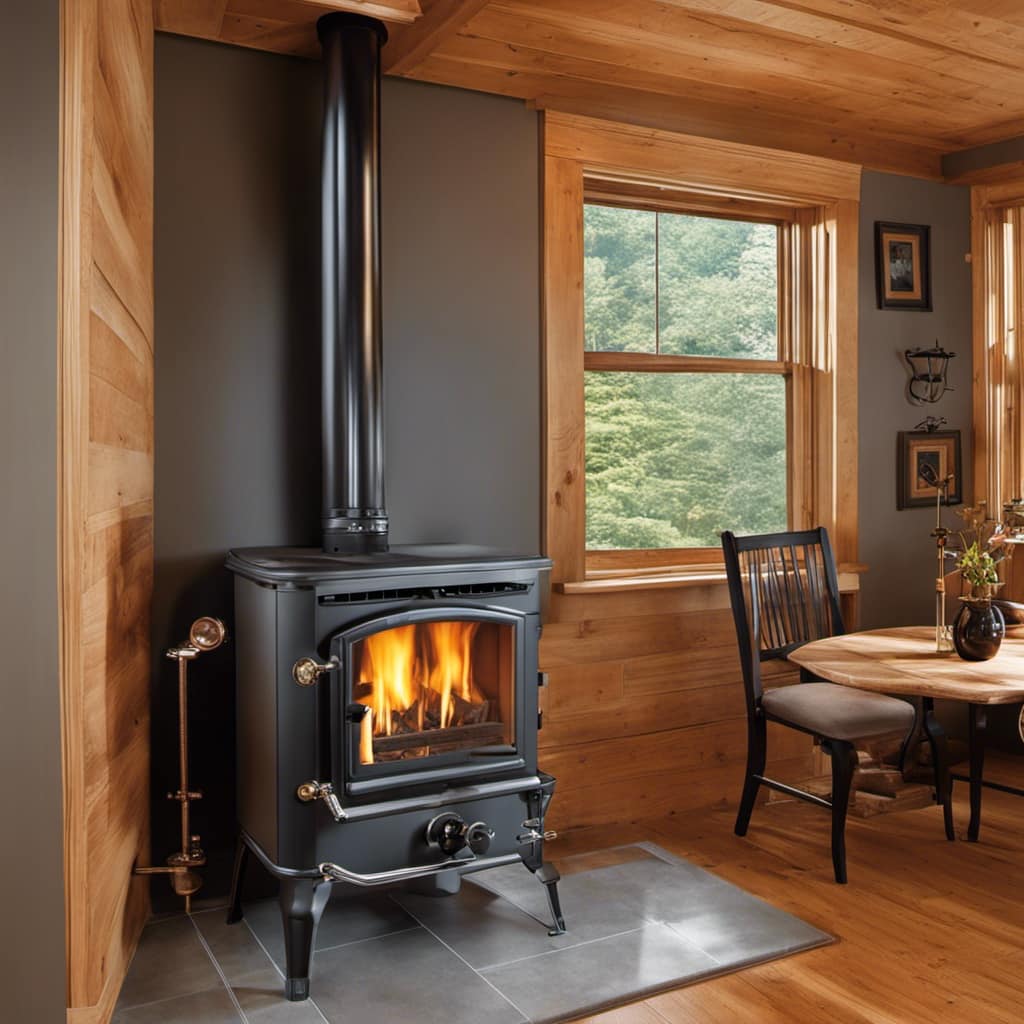You have a wood stove, and it appears that the seal on the door is beginning to wear out, correct? Do not worry, my friend, because I have the perfect solution for you.
In this article, I’ll show you exactly how to replace that pesky door seal like a pro. We’ll go through the steps together, from assessing the condition of the seal to testing its effectiveness.
So grab your tools and let’s get to work on keeping that wood stove in tip-top shape.
Key Takeaways
- Visible cracks, tears, or gaps in the seal indicate wear.
- Air leakage around the stove door or a draft may indicate a faulty seal.
- Choose a new door seal made of silicone or fiberglass for durability and heat resistance.
- Regularly inspect and clean the seal with a damp cloth.
Assessing the Condition of the Door Seal
I need to check on the condition of the door seal to make sure it’s still in good shape and properly sealing the stove.
Evaluating door seal damage is crucial in maintaining the efficiency of a wood stove. Signs of a worn out door seal include visible cracks, tears, or gaps in the seal. Additionally, if you notice any air leakage around the stove door or feel a draft coming from it, it may indicate a faulty seal.
To assess the condition, start by visually inspecting the seal for any visible damage. Run your fingers along the seal to feel for any irregularities. If necessary, you can also perform a smoke test to identify any air leaks.
Properly evaluating the door seal ensures optimal performance and prevents energy loss.
Gathering the Necessary Tools and Materials
To complete the task, I’ll need to gather a few essential tools and materials, including a screwdriver and a new door seal.
When choosing the right type of door seal, it’s important to consider the material and size that best fits your wood stove. Silicone and fiberglass are common options, known for their durability and heat resistance. It’s also crucial to measure the dimensions of your stove door to ensure a proper fit.
Maintaining the door seal is vital for optimal stove performance. Regularly inspect the seal for any signs of wear or damage, and clean it with a damp cloth to remove dirt and debris. Avoid using harsh chemicals that could deteriorate the seal.
With the necessary tools and materials gathered, it’s now time to proceed with removing the old door seal.
Removing the Old Door Seal
Before starting the removal process, it is important to carefully inspect the old door seal for any signs of damage or deterioration. This will ensure that you have an accurate assessment of the condition and determine if a replacement is necessary. To assist you in identifying potential issues, here is a table outlining common problems that may be present in the old door seal:
| Signs of Damage or Deterioration |
|---|
| Cracks or tears |
| Worn or flattened areas |
| Hardened or brittle material |
Inspecting the door seal thoroughly will allow you to determine if repairs, such as repairing the door hinge, are needed before proceeding. Additionally, take this opportunity to clean the door glass to ensure optimal visibility and efficiency. Once the inspection and cleaning are complete, you can move on to the next step of installing the new door seal.
Installing the New Door Seal
After inspecting the old door seal for damage, it’s crucial to properly align the new door seal before securing it in place. One of the most common installation mistakes isn’t aligning the seal correctly, which can lead to gaps and air leaks.
To ensure proper alignment, start by cleaning the door surface thoroughly and removing any adhesive residue. Then, carefully position the new seal along the edge of the door, making sure it’s centered and straight. Press it firmly against the surface to create a strong bond.
Proper maintenance techniques include regularly checking the seal for wear and tear, and replacing it as needed. Additionally, make sure to follow the manufacturer’s guidelines for cleaning and lubricating the seal. By taking these steps, you can ensure a tight and efficient seal that will maximize the stove’s performance.
Now, let’s move on to testing the door seal for effectiveness.
Testing the Door Seal for Effectiveness
I need to carefully inspect the door seal by running my hand along the edge of the door to feel for any air leaks. In order to ensure that the door seal is effective and there are no leaks, there are a few testing methods and troubleshooting tips that can be followed:
-
Visual Inspection: Start by visually examining the door seal for any signs of wear or damage. Look for cracks, gaps, or frayed edges that could indicate a faulty seal.
-
Smoke Test: Light a small piece of incense or a smoke stick and hold it near the closed door. Move it along the edges of the door seal, paying close attention for any signs of smoke escaping. This will help identify any areas where the seal isn’t tight enough.
-
Dollar Bill Test: Place a dollar bill between the door and the stove. Close the door and try to pull the bill out. If it slides out easily, it indicates that the seal isn’t tight enough.
Frequently Asked Questions
How Often Should the Door Seal on a Wood Stove Be Replaced?
I inspect the door seal on my wood stove annually. There are various types of door seals available, such as fiberglass rope, gasket tape, and adhesive-backed foam. Regular inspection and replacement ensure optimal efficiency and safety.
Can the Door Seal on a Wood Stove Be Repaired Instead of Replaced?
Yes, the door seal on a wood stove can be repaired instead of replaced. Some alternative solutions include applying high-temperature silicone sealant or using a gasket adhesive to fix any leaks or gaps in the seal.
Are There Any Safety Precautions to Take When Replacing the Door Seal on a Wood Stove?
When replacing the door seal on a wood stove, it is crucial to take safety precautions to avoid potential dangers. Properly disconnect the stove, wear protective gloves and goggles, and work in a well-ventilated area.
What Are the Common Signs That Indicate the Door Seal Needs to Be Replaced?
When a wood stove door seal starts deteriorating, signs like smoke leakage, difficulty in maintaining a fire, and increased fuel consumption become evident. Replacing the seal involves a few steps.
Is It Necessary to Hire a Professional to Replace the Door Seal on a Wood Stove, or Can It Be Done as a DIY Project?
I can replace the door seal on a wood stove as a DIY project. Hiring a professional can be costly, but with the right tools and instructions, it can be done effectively and save money.
Which Sealant Should I Use to Replace the Door Seal on My Wood Stove?
When it comes to replacing the door seal on your wood stove, it is essential to choose the right sealant. There are various sealant options for wood stove doors and vents available in the market. Ensure you select a high-quality sealant that can withstand high temperatures and effectively seal any gaps to optimize the stove’s performance and energy efficiency.
Conclusion
After following these steps and replacing the door seal on your wood stove, you can rest easy knowing that your stove is now properly sealed and ready for efficient heating.
With the new door seal in place, you can keep the fire burning without any worries of heat loss or smoke leakage.
This simple yet crucial maintenance task is a piece of cake and will ensure that your wood stove operates at its best, giving you cozy warmth during those chilly winter nights.
It’s like a breath of fresh air for your heating system.











